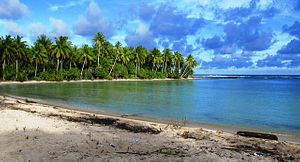December saw the first arrivals in Australia of participants from Kiribati in a new “Microstate Visa.” The program is aimed to the citizens of Nauru, Tuvalu and Kiribati, and carries a different set of regulations to the Seasonal Workers Program available to nine Pacific Island countries, and Timor-Leste. The visa is currently in its pilot stage and will allow 250 people from each of the three countries, over a five year period, a two-year work visa, with the option of applying for a third year.
Kiribati was the first country to sign the agreement with the Australian government. The agreement with Tuvalu is currently awaiting to be sign by both countries. Due to the unique situation in Nauru as the host of Australia’s offshore detention facility, negotiations remain ongoing, but will hopefully be completed in the new year.
While the visa is a positive step in allowing greater access to Australia’s labor market, it does comes with some significant restrictions that limit participants to low-skill labor in agriculture and tourism, with discussions taken place to extend the employment opportunities into elderly care. The other major restriction is that these jobs must be taken in northern Australia. This can be viewed as part of the government’s desire to populate and develop Australia’s northern regions.
Part of the reason for this policy is the unique demands for labor in Australia’s northern regions, where companies have a rapid turnover of staff due to the transitory nature of the way people spend their time there. The Seasonal Workers program utilized by other Pacific Island states only allows for 6 months work with each employer, while European backpackers and southerners escaping the winter are not considered longer term employment prospects. Were this visa to be expanded after the pilot program, then a 2 to 3 year visa for Pacific Islanders may provide greater labor stability in the region.
While Australia may be attempting to facilitate its own labor and development requirements though this scheme, it is also a recognition of the great importance of providing labor market access as a development strategy for the South Pacific region. Being able to work in Australia will not only generate significant remittances to be sent back home, but it will be provide valuable skills for participants who return home after their visas expire.
Significantly, both the Microstate Visa and the Seasonal Workers Program have recently been extended to include tourism. For many of the Pacific Islanders who take the opportunity to work in the Australian agricultural sector, similar sectors or conditions don’t exist in their home countries to utilize their new skills upon returning. However, this is not the case with tourism, a major source of income for most Pacific Islands.
Although the expansion into tourism is welcome, limiting the sectors within which Pacific Islanders can work remains a constraining exercise. While these restrictions may have been created in order to limit the “brain drain” of more highly skilled Pacific Islanders, what they actually do is restrict the “brain circulation” flowing through the islands, preventing participants from developing a broader range of skills that could be of greater assistance to their societies. New Zealand’s labor program for people from Kiribati, Tuvalu, Tonga and Fiji — the Pacific Access Category — provides permanent residence and simply requires that applicants obtain a job and not rely on public funds, it does not have any restrictions on which sectors these Islanders are able to work in.
The importance of labor mobility and the remittances this generates is increasingly becoming acknowledged as the most effective, and least paternalistic, tool to allow developing countries to improve their situations. Analysis from Australia’s premier foreign policy think tank the Lowy Institute suggests that were Australia to allow just one percent of the population of the South Pacific island nations to work permanently in Australia the benefits to these countries would be greater than Australia’s current aid program in the region.
Aside from migration’s importance for the South Pacific’s development, the threat of climate change also requires an acknowledgement that further migration pathways for these countries are becoming increasingly important measures for their human security. Especially for Tuvalu and Kiribati, the two countries in the South Pacific most under threat from rising sea levels, The Kiribati government has already purchased an area of land in Fiji as an insurance policy against its potential submersion, yet other options need to be explored.
If the pilot program for this new Microstate Visa produces positive results it is highly likely that the Australian government will expand its scope. Hopefully expansion of the program will remove both the regional and employment restrictions in order to increase its positive outcomes. This then could potentially lead to changes in the Seasonal Worker Program to allow citizens of other Pacific Island nations greater access to the Australian labor market.

































